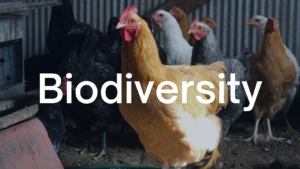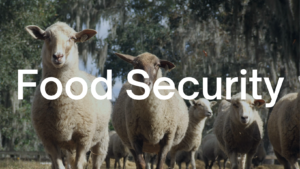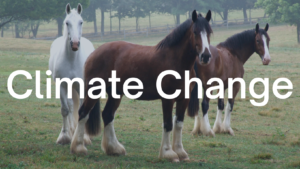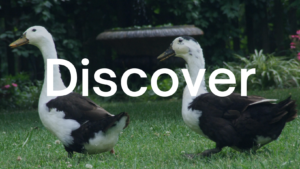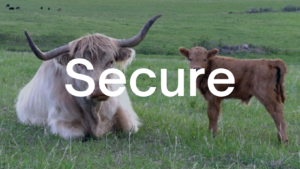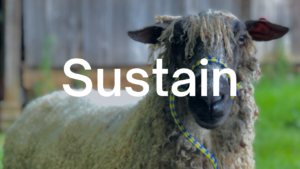ABOUT US
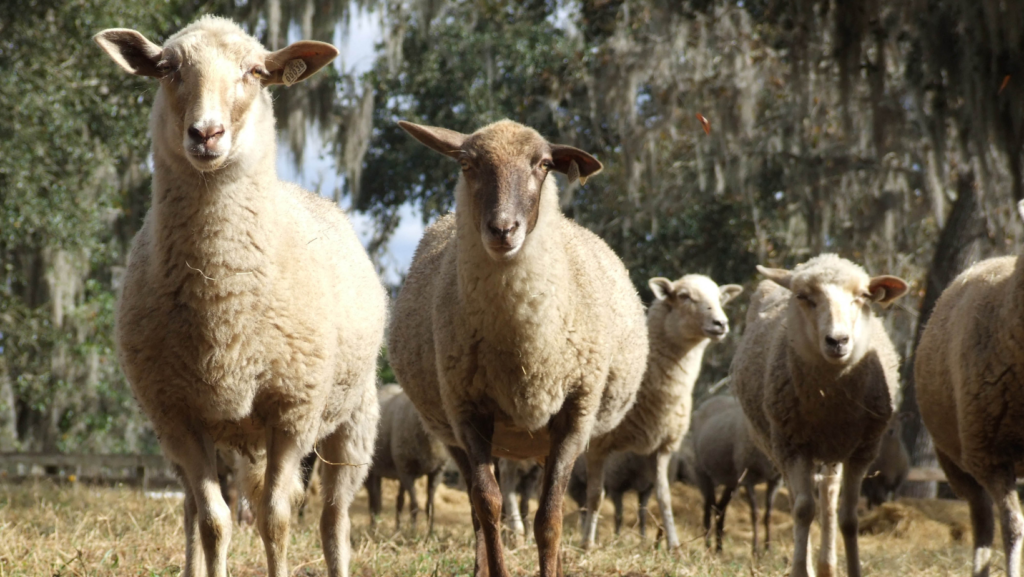
Our Mission
The Livestock Conservancy is a nonprofit membership organization. Our mission is to protect endangered livestock and poultry breeds from extinction. Included in our mission are over 150 breeds of donkeys, cattle, goats, horses, sheep, pigs, rabbits, chickens, ducks, geese, and turkeys.
To put our mission into context, in 2006 the United Nations Food and Agriculture Organization (FAO) estimated that we lose an average of 2 domestic animal breeds each week. In the past fifteen years alone, the FAO has identified the extinction of 300 out of 6,000 breeds worldwide, with another 1,350 in danger of extinction. The Livestock Conservancy is the leading organization working to stop the extinction of these breeds in the United States – ensuring the future of our agricultural food system.
Why Conservation Matters
Heritage breeds of livestock and poultry protect our food systems, both now and into the future. By securing genetic diversity we enable healthy agriculture development while preserving heritage, history, and culture. These animals represent an irreplaceable piece of earth’s biodiversity that once lost, will be gone forever.
Heritage breed conservation retains animals well suited for sustainable, grass-based systems, which gives some small farms a competitive edge. It also broadens the marketplace with diverse fiber and flavorful foods. Their unique genetic traits offer an incredible variety that may be needed for future farms, including robust health, mothering instincts, foraging, and the ability to thrive in a changing climate.
As guardians of this genetic diversity, The Livestock Conservancy prevents extinctions, expands populations, educates beginning farmers, and helps breeders establish new markets for their products. Our programs maintain the long-term viability and sustainability of endangered breeds. Since its inception in 1977, The Livestock Conservancy has not lost a breed listed on our Conservation Priority List.
- Biodiversity. The challenge we face as a nation and as an agricultural community is that heritage breeds are a reflection of genetic diversity. If we lose breeds, we lose genetic diversity. Many will ask, “So what, why does genetic diversity matter?” The simple answer is that our agriculture system is like a stock portfolio. If we invest all of our currency in a limited number of breeds, we are at risk of losing all of our investments. If we embrace diversifying the agricultural portfolio through rare breed conservation, our assets are diversified. If a disease were to strike a certain strain or breed, or if climate changes were to affect a particular line – heritage breeds could provide the genetic diversity needed to fall back on.
- Food Security. In today’s large-scale agricultural systems, only a relatively few highly specialized breeds are used to supply a majority of the world’s food resources. 3/4 of the world’s food supply draws on just 12 crops and 5 livestock species. This places the world’s food supply at risk if anything should happen to these breeds such as disease or irreversible adverse genetic mutation.
- Living History. “Heritage” is an umbrella term that embraces pure breeds of livestock and poultry with deep histories in the United States. These are animals that were bred over time to develop traits that made them suited to specific local environments. They play an important part of our history that can’t be replaced once lost.
- Climate Change. Climate change is already putting a strain on farming systems, and livestock will have to be better adapted to more difficult environments. Since traditional, historic breeds retain essential attributes for survival and self-sufficiency, these breeds store a wealth of genetic resources that are important for our future.
The Conservation Paradigm: Our Process
For over 40 years The Livestock Conservancy has accomplished conservation through our Discover, Secure and Sustain process. Each step has specific tasks that must be done, and specific pitfalls that must be avoided if conservation is to succeed.
Discover means finding rare breeds and unknown herds, out there, in the fields and woods and barns where they have quietly survived for generations. Important populations can be discovered many different ways, sometimes they are noticed on a farm using other more recognizable rare breeds, and very frequently they are discovered when someone mentions the old guy down the road with some interesting animals. Discovery is most essential for landraces and feral populations.
It takes research to figure out if newly discovered animals might in fact “be something.” The place and the history of both the people and the animals set the context. Gaps in the history may be discovered that change the context. If the animals meet the biological definition for a breed or a strain, the next step is to get a good close look at the animals. Does the herd or flock reflect the history of origin? Is there a consistency of breed type across all the animals? A census occurs at this stage, too, and the breed characteristics are documented.
Secure. It takes science, politics, collaboration, and a hefty portion of luck to secure a breed. The goal is to prevent further genetic erosion by setting up a plan that encourages breeders to conserve all of the genetic diversity found within the breed. This begins by figuring out the structure of the breed population. How each herd or flock relates to the others? How are the animals related to each other? DNA analysis can sometimes help at this stage, though much is learned from oral and written histories. Breeding strategies are devised that maintain bloodlines but protect against the loss of health that occurs with inbreeding. Securing a population requires that people work together. To be successful the breeders absolutely must work together to save the animals in the environmental and cultural context closest to that in which they evolved. Breed associations, registries, promotion and marketing, all come out of this human collaboration.
Sustain. This is the stage where a breed can really take off. The breed has been secured genetically, and has been stabilized with regard to population structure and genetic variation. With smart thinking, patience, and respectful cooperation, breeds can grow into valued components of our agricultural and food systems. During this step new people become interested in the breed, and they need education on husbandry, breeding, and genetic resource management to sustain the breed for the future. They need information about the process of converting living animals to human food, and how to connect with customers. New and experienced breeders alike also seek help in thinking through all of the stages that a breeder goes through in a lifetime of breeding. These include frequently overlooked topics such as herd reduction or liquidation, disaster planning, and so on. Planning for these contingencies ensures that the breed doesn’t slip back into the perilous slide toward extinction.
Inclusion Statement
The Livestock Conservancy remains committed to developing an inclusive community focused on protecting endangered livestock and poultry breeds from extinction.
Although our main mission is focused on animals, people make that mission possible. We seek to listen to the voices of underserved communities and to address the challenges that hinder some from joining the mission to save rare breeds. The future of agriculture, and especially heritage breeds, depends on a community working together.
Building an inclusive community has always been a part of The Livestock Conservancy’s core values and strategic plan, and we are recommitting a focus to those efforts. We believe that our work should reflect all traditional farmers, and that we should play a meaningful role in creating a just and equitable farming community. As the first step of this journey, we are listening and learning. Our staff are participating in inclusion training and reaching out to members and supporters to understand what a more inclusive community might look like. If you would like to provide feedback, please email info@livestockconservancy.org.
The process of creating meaningful, sustainable change toward a more inclusive community takes time. As a vibrant, engaged community, your voices, participation and ideas are key to achieving this goal together.
Core Values
Animal well-being: The Livestock Conservancy supports production and husbandry practices consistent with the historic purposes and uses of endangered breeds, leading to their good health, longevity, and full value in American agriculture.
Quality and integrity: The Livestock Conservancy practices science-based, genetic diversity conservation, and emphasizes research and education to expand and share knowledge and understanding of endangered breeds.
Diversity: The Livestock Conservancy emphasizes diversity of culture, perspectives, and practices in the realization of its mission, which leads to greater opportunities for endangered breeds of livestock and poultry, and for human prosperity.
Collaboration: The Livestock Conservancy encourages and participates in cooperative efforts at all levels of the organization’s reach. This includes working individually and collectively among all members of the heritage breed production chain: breeders, producers, processors, marketers, and consumers.
Stability: The Livestock Conservancy works to ensure the integrity of endangered breed genetic resources by maintaining a strong alliance with breeders and breed associations, promoting breeder livelihoods and breed resilience, and supporting the development of healthy markets and a strong consumer base.




